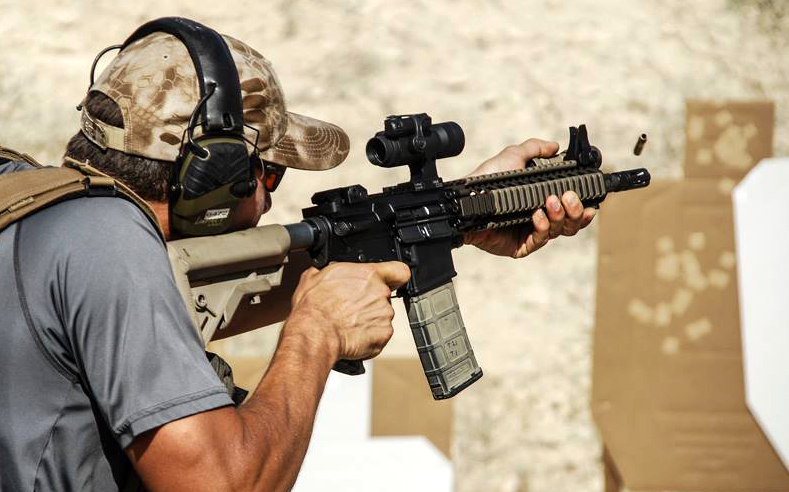For the past decade, the red dot optic (RDO) has become a necessary staple of the police patrol rifle. The RDO allows the shooter to forgo aligning front and rear sights and simply place the reticle on the target to attain a hit. The reticle remains clear with the shooter’s eye focused on the target allowing the reticle to simply appear on target when the shooter attains a cheekweld without ever having to adjust focus off of a threat. The RDO offers unlimited eye relief negating the need for perfect cheek placement when switching between slick, concealable armor, plate carriers or over vests, and ballistic helmets. The lack of scope shadow and parallax allows the RDO reticle to be useful at the extreme sides of the ocular window, so the shooter can still attain sighted fire when gear or environmental factors force the shooter’s face off of the stock. Several RDO offerings have proven extremely rugged under severe combat testing, and they will not fail or lose zero under harsh patrol conditions. They have proven to work under temperature extremes, rain, water and mud submersion; after being dropped and impacted against doorframes, gear, and people; fallen on top of by 200 pound officers wearing 60 pounds of gear; and countless other unimaginable circumstances. The RDO has become the one dependable electronic device that officers do not expect to fail at the worst possible moment. In Texas it has been one of the very few optics to meet the criteria for patrol rifle use.

Aimpoint mounted to a SWAT entry rifle. The RDO’s speed, versatility, and durability have made it a staple on the police rifle.
While the lack of magnification gives the RDO its close range speed and versatility in shooting positions, it does not allow the shooter to see the target any better than the naked eye. While classic silhouette targets are visible to the naked eye for hundreds of yards, far beyond the realistic distances of likely domestic police shootings, rarely does an officer have the luxury of shooting at silhouettes. People have a tendency to seek out cover and make themselves as small as possible when being shot at. A patrol officer’s 50 yard perimeter shot on an armed barricaded subject may not be at the suspect standing straight up in the open but instead through a closed glass window covered in glare. The suspect’s head may be the only part visible while he’s crouched behind a vehicle 70 yards away shooting at other officers. Add in darkness and adverse weather conditions, and the ability to see the target better than the naked eye becomes apparent. Before anyone starts to quote statics on “average” police gunfights, both of these were recent officer involved shootings from my agency. Before a target can be engaged, it must first be identified, and the visual differences between a handgun and a wallet, or a shotgun and a broken guitar handle, do not take a great distance to become muddled. Both of these were actual misidentifications made by officers on the street. Thankfully, none of them ended tragically.
In 2014 Texas Commission On Law Enforcement (TCOLE) redefined the definition of a patrol rifle to “any magazine-fed repeating rifle with iron/open sights or with a frame mounted optical enhancing sighting device, 5 power or less, that is carried by the individual officer in an official capacity.” Any magnification greater than 5x is defined as a precision rifle requiring different certification. This increase to 5x magnification from the previous limit of 3x magnification greatly increased the pool of suitable low-power variable optics eligible for patrol rifle use. The trick has been identifying a low-power variable that gives an officer the benefit of magnification in addition to all of the benefits of the RDO.
Next up – Part 2: US Optics SR4C Overview
